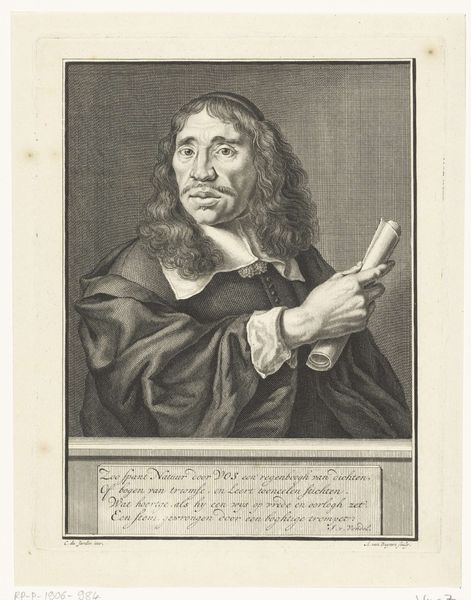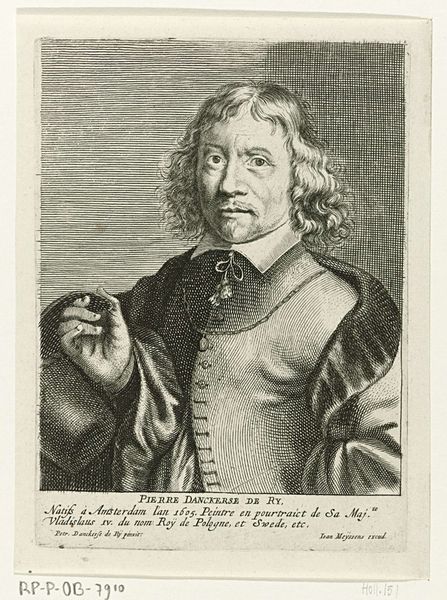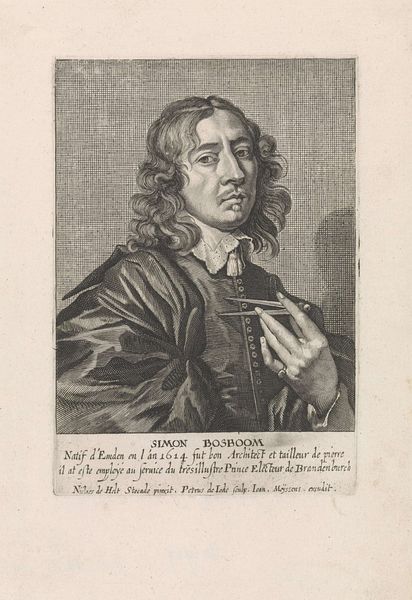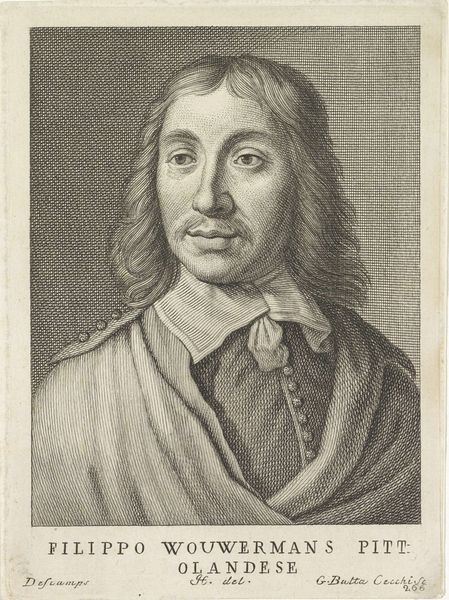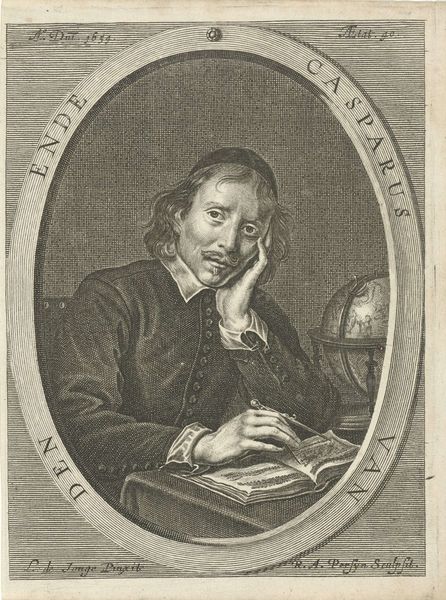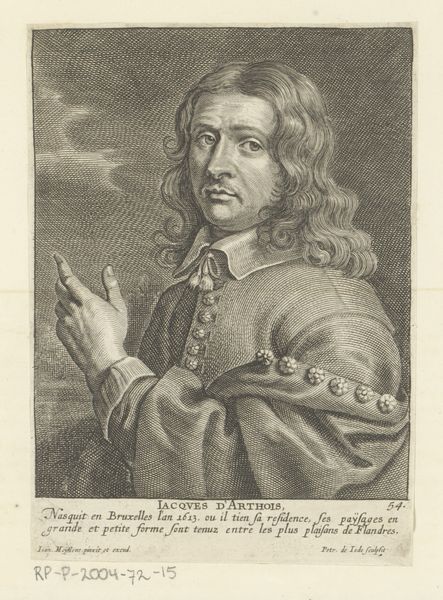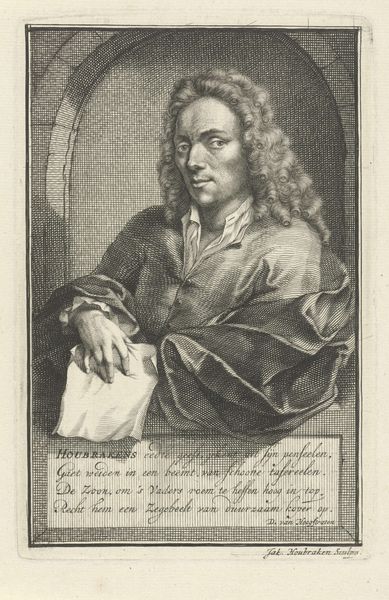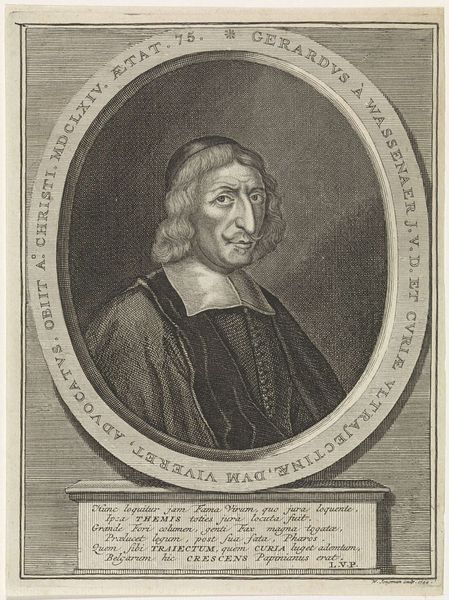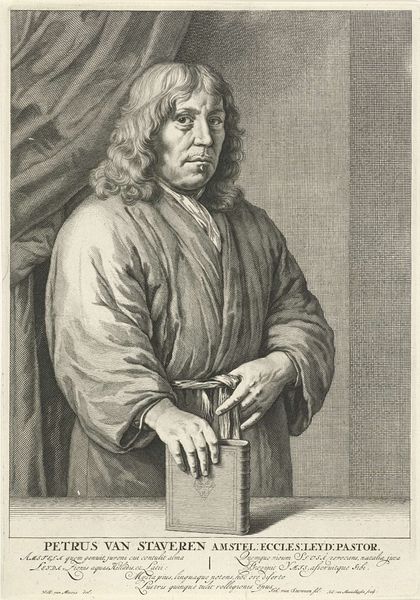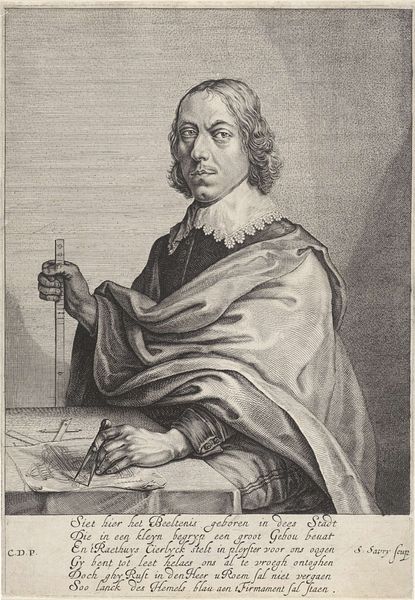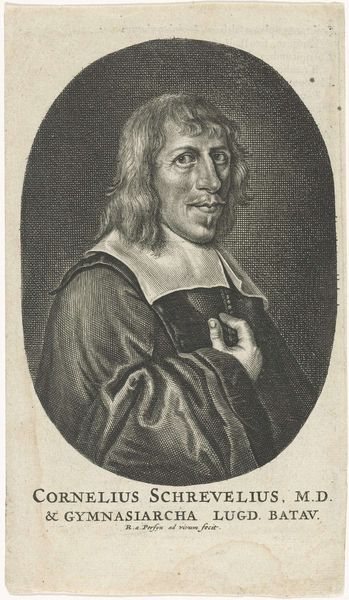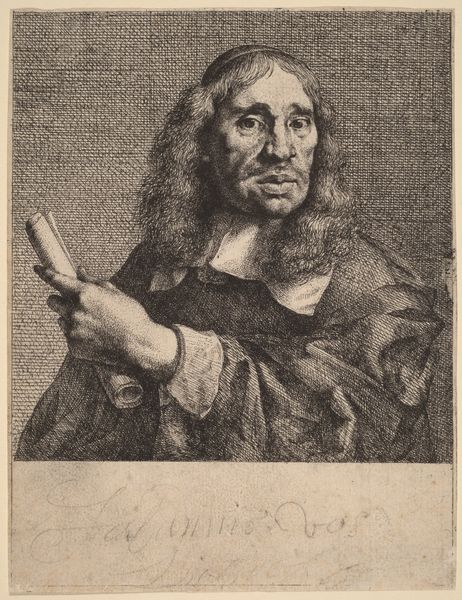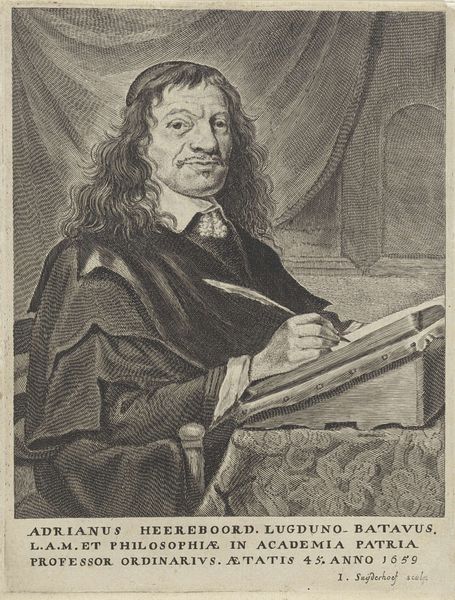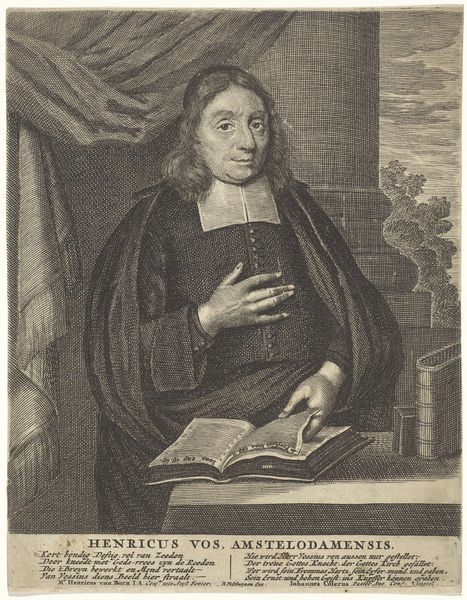
print, engraving
#
portrait
#
baroque
# print
#
old engraving style
#
pencil drawing
#
engraving
Dimensions: height 166 mm, width 127 mm
Copyright: Rijks Museum: Open Domain
Curator: Here we have Karel du Jardin’s "Portret van de dichter Jan de Vos," a print made between 1652 and 1662. Editor: My immediate impression is of something quite stark, perhaps a little melancholy. The monochrome, of course, contributes to that, but it's more than just the limited palette. The way the light catches the subject’s face… it emphasizes a kind of weariness. Curator: Indeed. This engraving encapsulates a specific moment in Dutch cultural history. Jan de Vos was a poet during a period of significant social and political upheaval. Considering this, the artist makes an interesting composition choice. Editor: In what way? I'm rather struck by the textured background, it adds depth, particularly in contrast to the smoothness of his face. The way the lines are etched, there's a real sense of chiaroscuro being evoked. The detail in the drapery, too, pulls the eye. Curator: Well, it’s about de Vos' role and representation. He’s holding what appears to be a rolled manuscript, signifying his occupation and status. However, his expression seems burdened, reflecting the complex relationship between artists and patrons. There is that weight on the poet in the face of external demands. The gaze feels critical. Editor: Ah, I see your point. The weight of words, perhaps? Interestingly, there is accompanying text below the portrait. It serves as a type of caption, yet the portrait precedes text when interpreting art—even within its own period. Curator: Yes, the interplay between image and text was a significant element of Dutch prints. But I look to the tensions and historical contexts the image can represent. This engraving reveals layers of meaning that resonate beyond its aesthetic qualities. The figure represents broader questions of creativity, labor, and influence, inviting viewers to engage with history on an intimate scale. Editor: It's a compelling work. Focusing on the details, such as the hatching of the lines, is always a good way of beginning and slowly absorbing an artwork's overall structure, balance, and message.
Comments
No comments
Be the first to comment and join the conversation on the ultimate creative platform.
